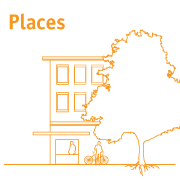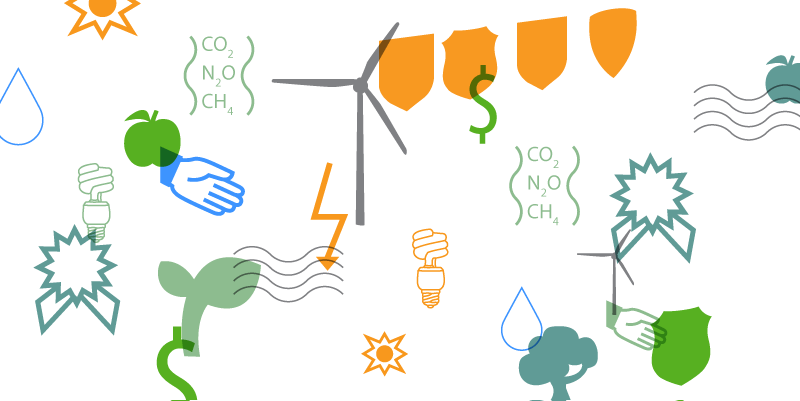Navigating the Sea of Sustainability Standards (I of III)
When it comes to sustainability there’s a vast sea of information available—and it’s not always easy to parse out accurate claims vs. marketing hyperbole. Phrases such as ‘all natural’ or ‘environmentally friendly’ have been slapped on about everything and anything we buy. First let us acknowledge that everything is relative, and that these claims often exist somewhere along a spectrum, but beyond that, how might an individual better determine the accuracy of a particular claim or make a more informed choice? One common and effective way to verify such claims is through third party ratings and certifications.
In this series of three posts we’ll explore the various aspects and value of rating systems for Places (buildings, communities and environments), People (products designed for sustainable living) and Processes (operational standards).
At evolveEA we not only help our clients implement sustainability best practices but can assist in navigating the litany of third party standards and determine opportunities for progress and recognition. We collaborate with clients toward common goals and work to implement standards or pursue certifications using a strategic common sense approach.
 To cover the first topic in our series—Places—let’s explore some prevalent green building rating systems in a little more detail:
To cover the first topic in our series—Places—let’s explore some prevalent green building rating systems in a little more detail:
Energy Star: This EPA program is a widely recognized label for buildings (as well as appliances and electronics) that are eligible to achieve an Energy Star rating. Over 20 different common building types (office, hospitals, hotels, and retail) are eligible. Applying for the Energy Star label is a low cost opportunity for recognition should a project meet the energy performance standard. Determining your building’s energy performance is simple. Take our free survey.
LEED: One of the most widely understood Green Building rating systems; LEED has developed a comprehensive green operations standard focused on eliminating the management gap between design, construction and operations. LEED for O&M focuses on efficient building operations while accelerating clients toward more comprehensive green building policy and plan development.
Living Building Challenge: To encourage the creation of living buildings, sites and communities in countries around the world while inspiring, educating and motivating a global audience about the need for fundamental and transformative change.
SERF: The Society for Environmentally Responsible Facilities is a business friendly Green Facility certification program. It awards credit to design or operations. SERF relies on local professionals to complete the application process and verify performance independently offering a low threshold for achievement.
BREEAM: First developed in 1990, BREEAM was one of the first environmental standards to focus on building performance. With over 200,000 facilities certified internationally, BREEAM addresses wide ranging environmental and sustainability issues for all phases of building development. It employs a straightforward and transparent rating system for clients to engage and improve building performance.
Green Globes: A web application that aids commercial building owners and property managers in the evaluation, documentation, and improvement of the environmental performance of commercial buildings; represents a comparable alternative to LEED-O&M. This standard can be used for new construction or operations and requires a site visit from a third party auditor.
All of the systems listed have various strengths weaknesses and criteria toward the pursuit of certification. No matter your project’s lifecycle, a green building certification is possible. Understanding which is most applicable to your project may represent new opportunities for discovery, improvement and recognition.


